In pictures: Astronomy Photographer of the Year 2018
- Published

The winners of the Royal Observatory Greenwich's annual photography competition have been announced, with first place going to an image of a dramatic landscape below the Milky Way.
American photographer Brad Goldpaint won both the overall award, Insight Astronomy Photographer of the Year 2018, and the People and Space category.
Taken in Moab, Utah, Goldpaint's Transport the Soul depicts immense red rock formations below the Milky Way on the right, and the distant Andromeda galaxy on the left.
Goldpaint beat thousands of amateur and professional photographers from around the globe to secure the £10,000 top prize.
Competition judge Will Gater said, "For me this superb image is emblematic of everything it means to be an astrophotographer; the balance between light and dark, the contrasting textures and tones of land and sky and the photographer alone under a starry canopy of breathtaking scale and beauty."

People and Space
Runner-up: Andrew Whyte (UK) with Living Space
Taken in Pagham, West Sussex, Whyte's photograph aims to show how accustomed we have become to the loss of night sky views because of light pollution, with the unlit street lamps allowing for awe-inspiring views.
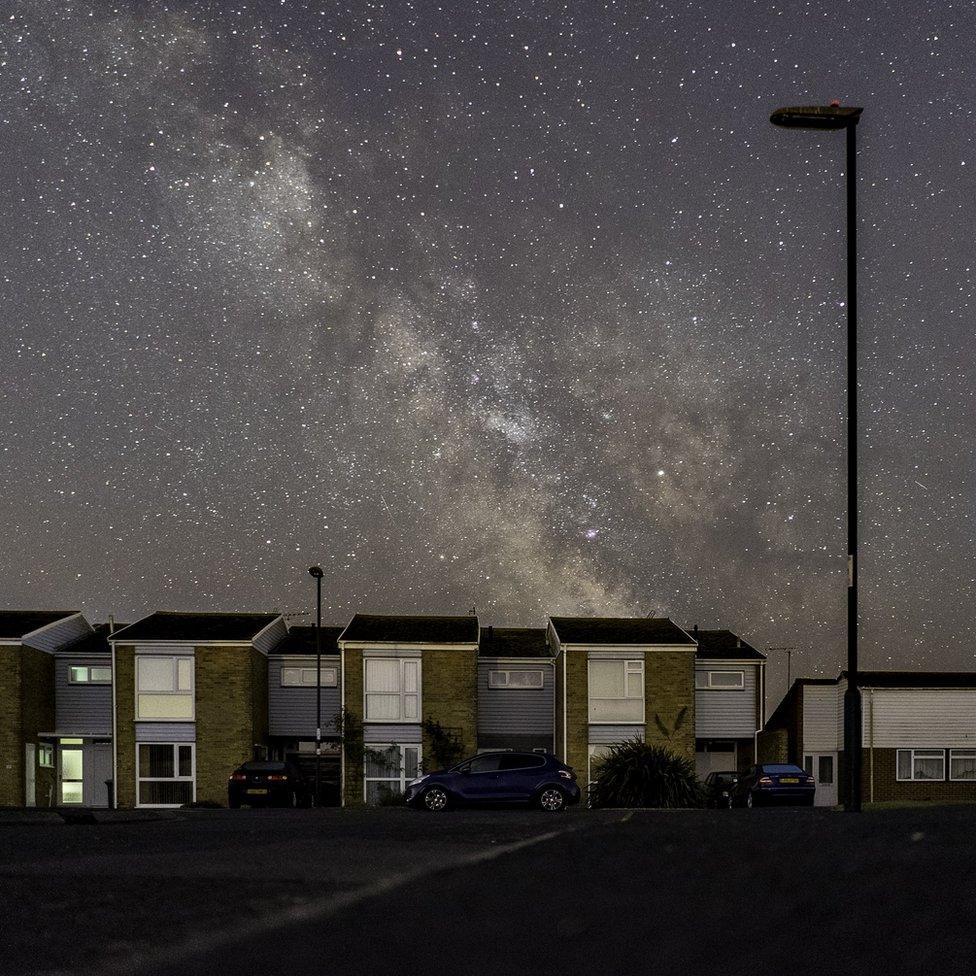

Aurorae
Winner: Nicolas Lefaudeux (France) with Speeding on the Aurora Lane
A hazy auroral band is seen drifting across the sky above Sirkka, Finland, seeming like a road disappearing over the horizon.
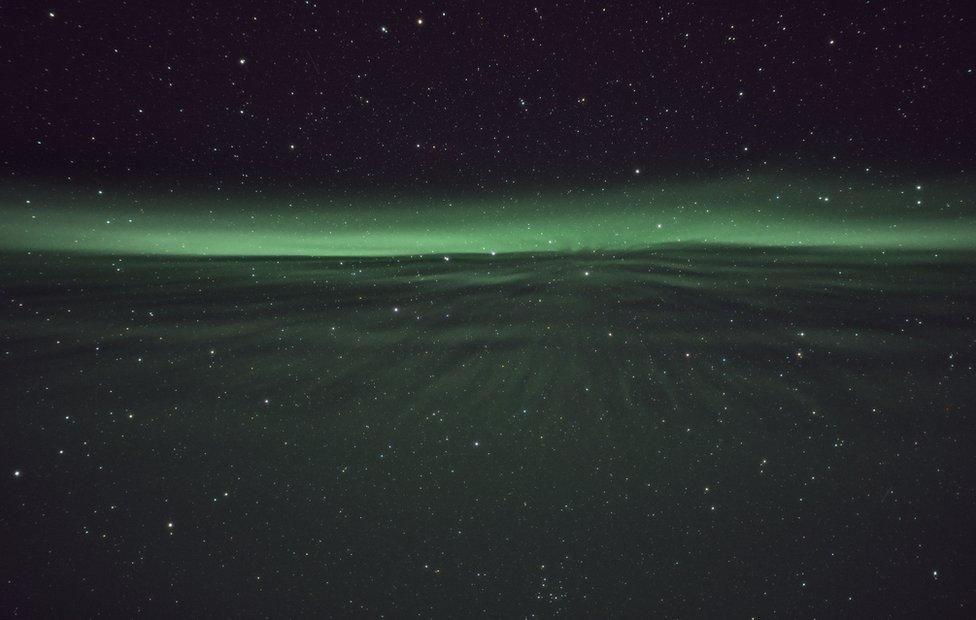
Runner-up: Matthew James Turner (UK) with Castlerigg Stone Circle
Turner's image depicts standing stones illuminated by moonlight, while auroras beyond the mountains gives the appearance that the hills are emitting an ethereal green glow.
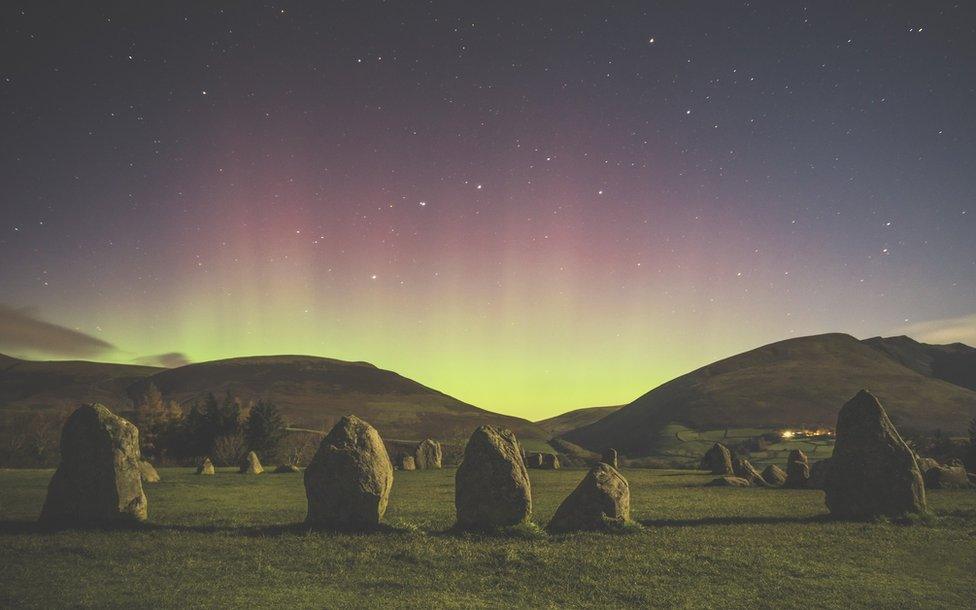

Galaxies
Winner: Steven Mohr (Australia) with NGC 3521, Mysterious Galaxy
The spiral galaxy NGC 3521 is located around 26 million light years away in the constellation Leo, with enormous amounts of surrounding dust and stray stars glowing far out from its disk.
Ageing yellow-red stars, younger blue-white stars burning aggressively, and various nebulae throughout the disk provide a bright array of contrasting colour tones.
This image comprises approximately 20.5 hours of exposure time with various filters.
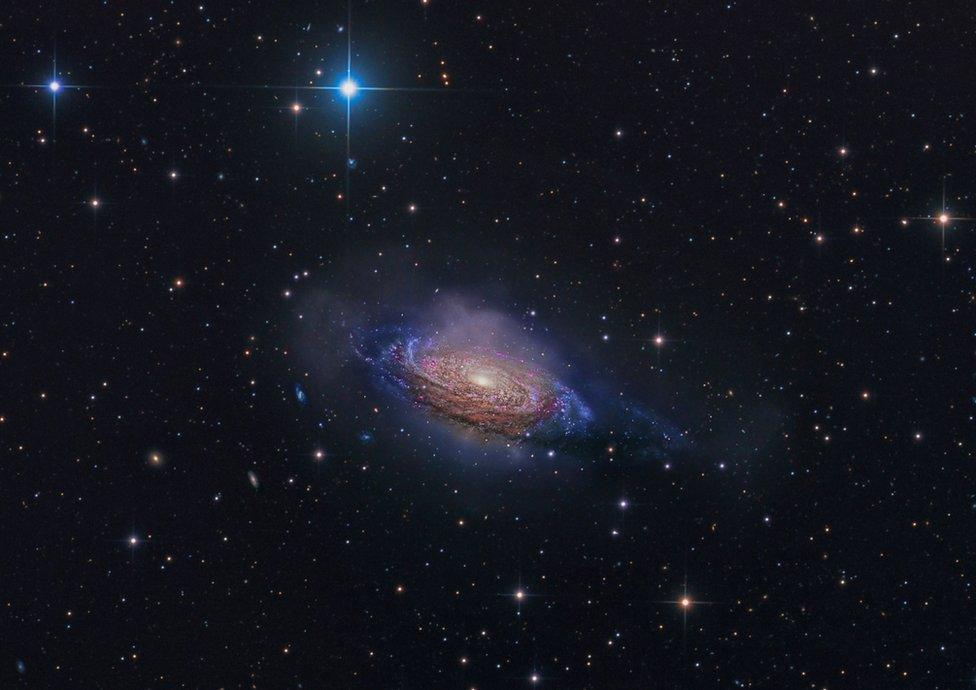
Runner-up: Raul Villaverde Fraile (Spain) with From Mirach
This photograph is a mosaic of 24 images and depicts the galaxies Messier 31 and Messier 33 either side of the star Mirach.
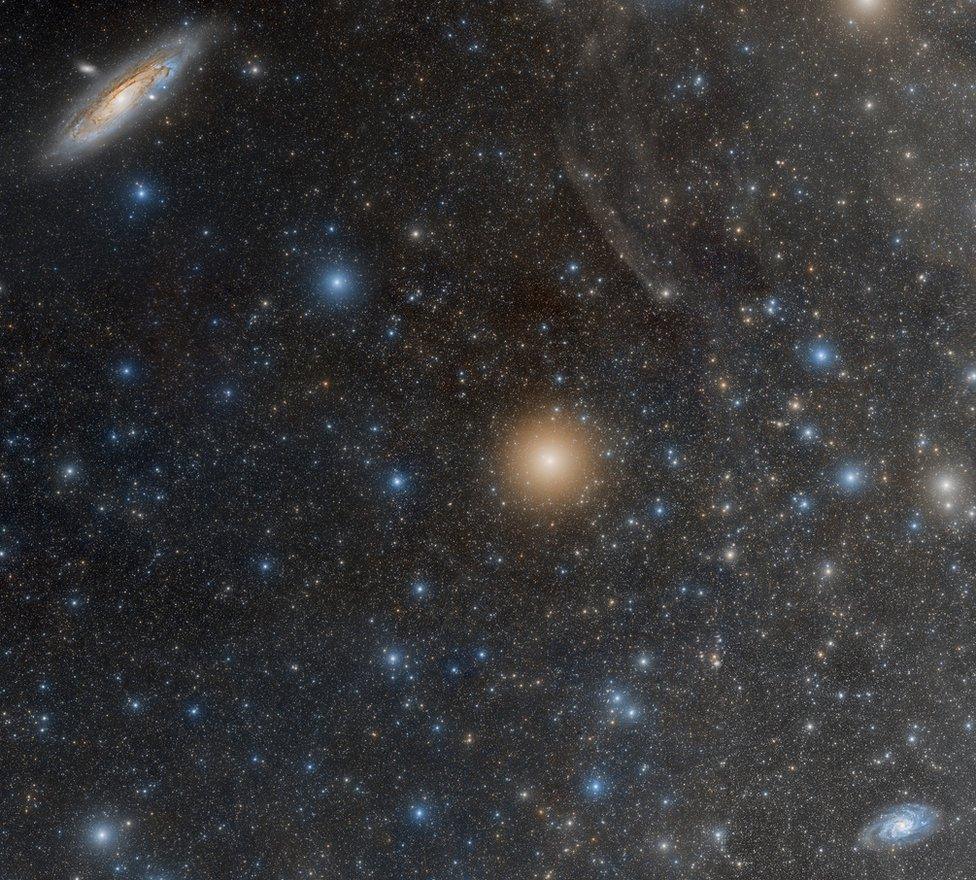

Our Moon
Winner: Jordi Delpeix Borrell (Spain) with Inverted Colours of the boundary between Mare Serenitatis and Mare Tranquilitatis
Inverting colours is a legacy of deep sky imaging, where faint detail of galaxies and nebulae can sometimes be clearer in a negative image.
Imaging the Moon in this way can help to reveal otherwise barely detectable soil features, such as ray systems.
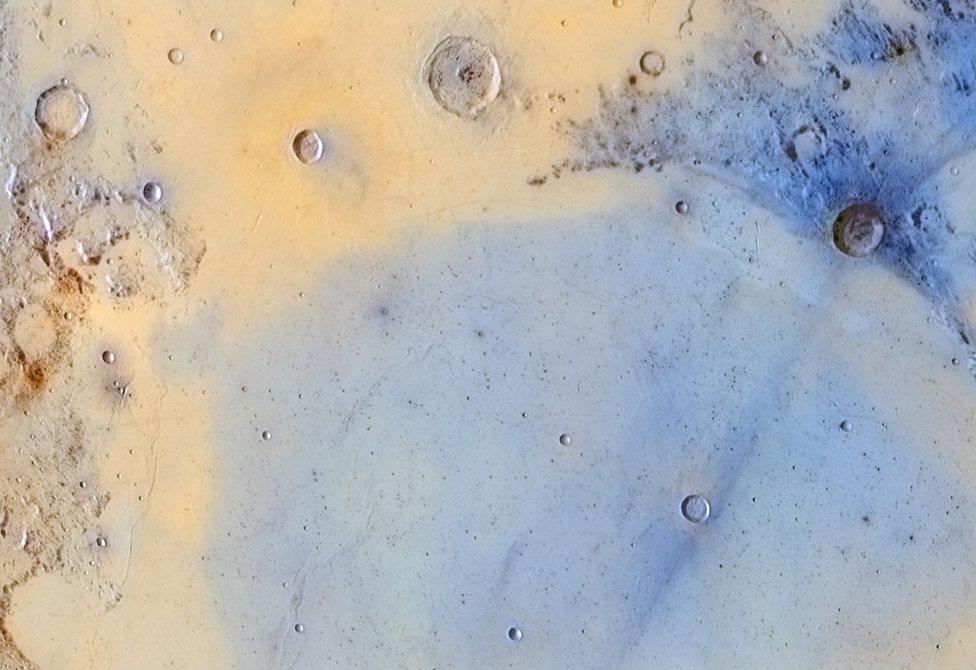
Runner-up: Peter Ward (Australia) with Earth Shine
During a total solar eclipse the brightness of the solar corona hides details of the Moon.
However, by layering multiple digital exposures - from two seconds to 1/2000th of a second - Ward's image shows the brilliant solar corona as well as the face of the Moon, illuminated by sunlight reflecting off the Earth.
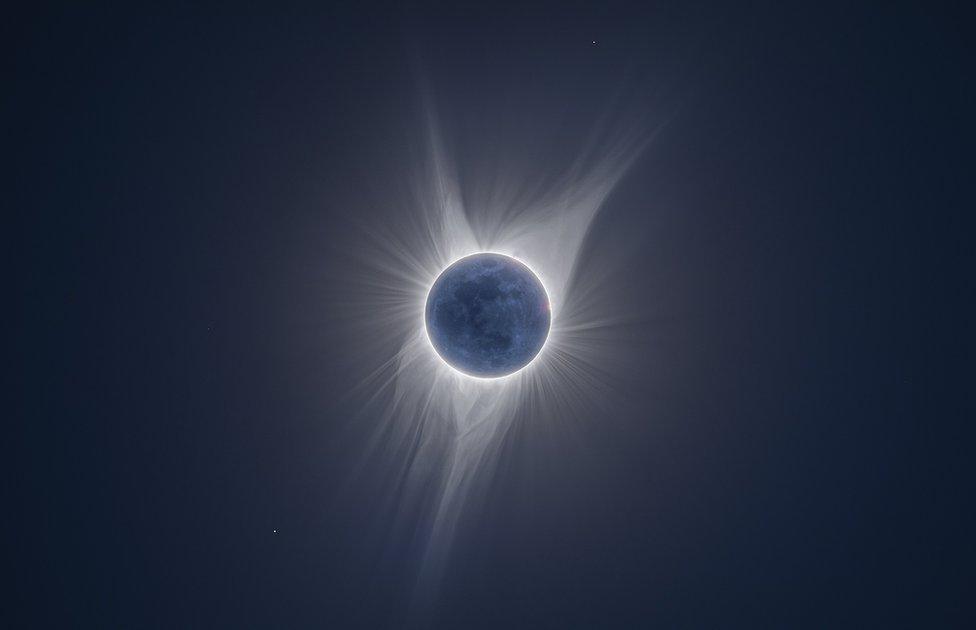

Our Sun
Winner: Nicolas Lefaudeux (France) with Sun King, Little King, and God of War
This image shows the solar corona during a total solar eclipse above Unity, Oregon, US.
The eclipsing sun is flanked on the left by the blue star Regulus and the red planet Mars on the right.
More than 120 individual images were used, with a total exposure duration of 100 seconds.
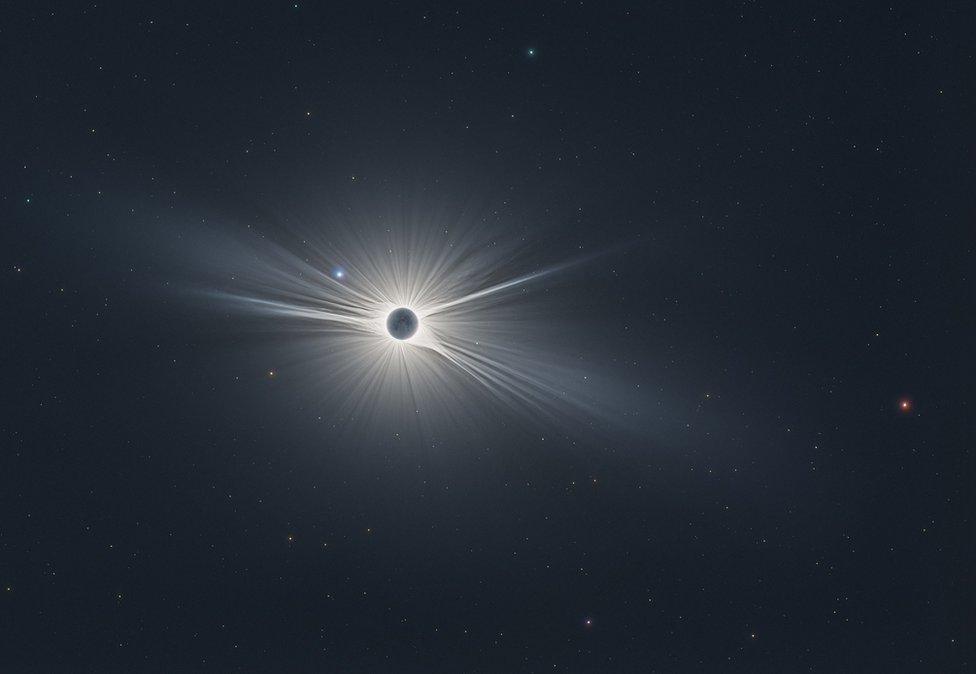
Runner-up: Stuart Green (UK) with Coloured Eruptive Prominence
In this image, the photographer managed to capture an eruptive prominence only hours after a massive solar flare.
Presented in an inverted format and colour enhanced to create a warm sunny glow, the photograph shows the beautiful structure within the hydrogen chromosphere.
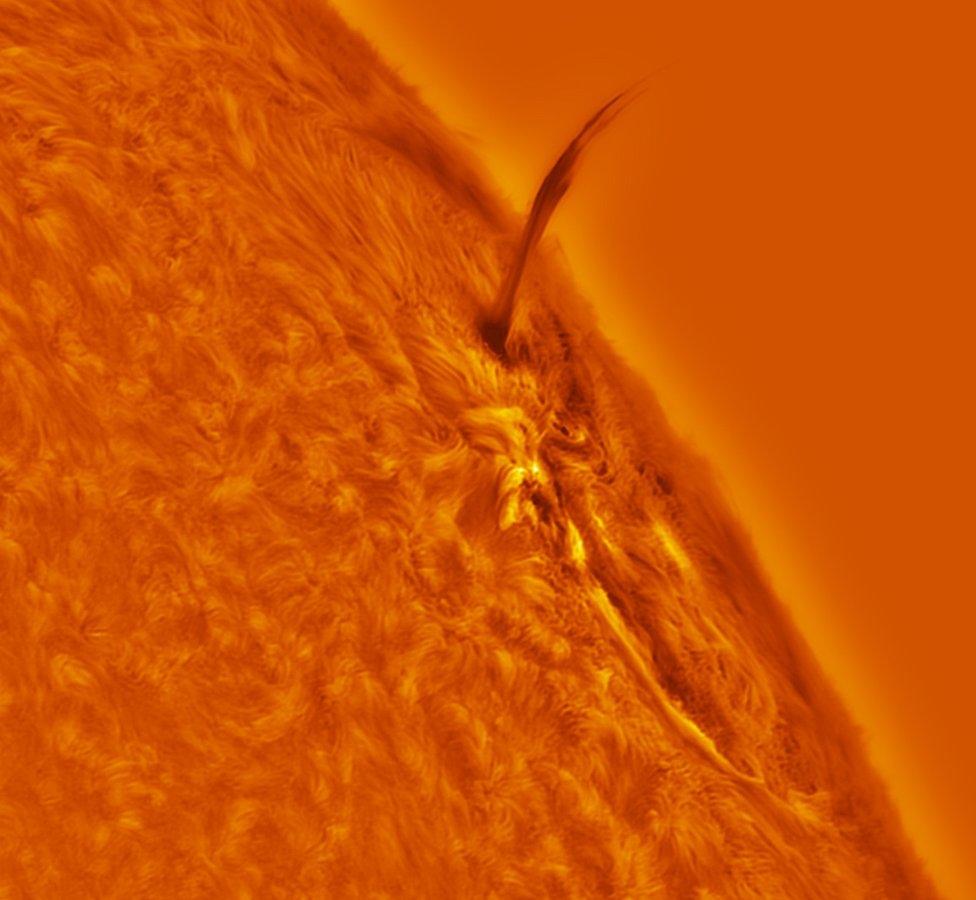

Planets, Comets and Asteroids
Winner: Martin Lewis (UK) with The Grace of Venus
Lewis captured this infrared image of Venus using a monochrome digital video camera mounted on a reflector telescope.
The video was processed to remove blurring caused by Earth's atmosphere and the frames were combined to create a single still image of the planet.
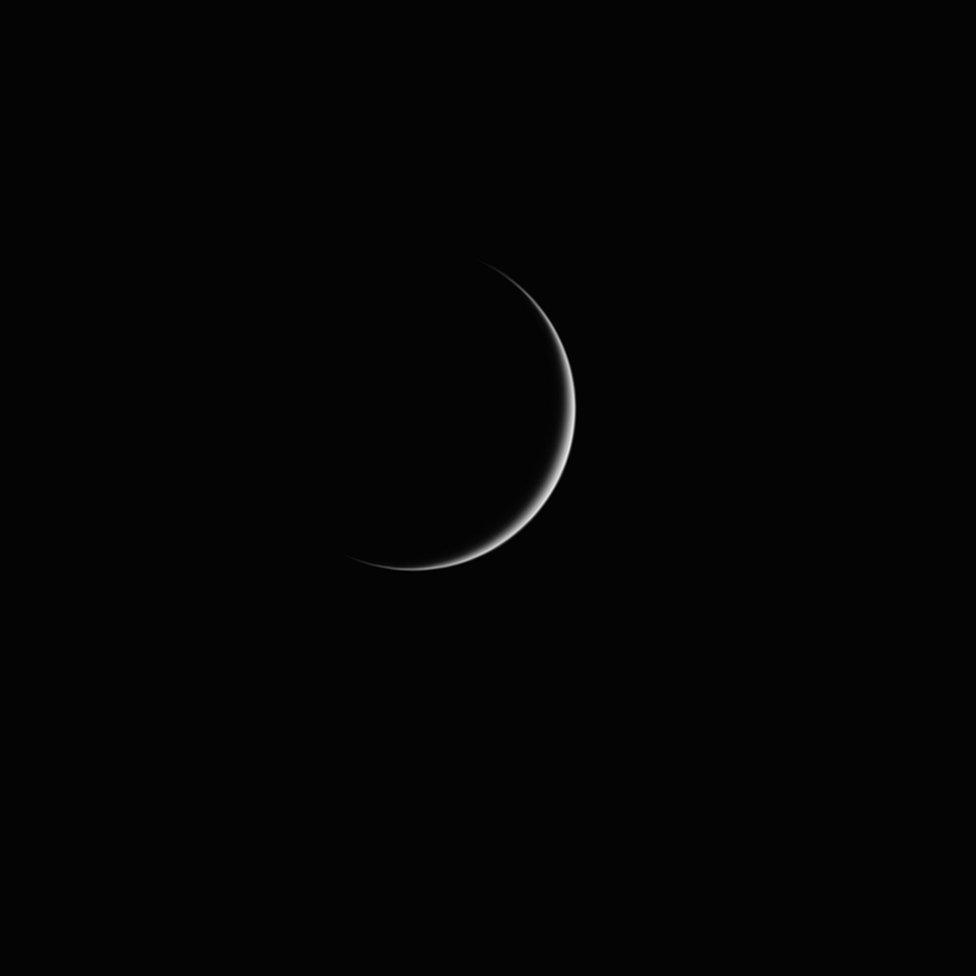
Runner-up: Martin Lewis (UK) with Parade of the Planets
Martin photographed every planet in our solar system from his own back garden in St Albans, Hertfordshire.
Mercury, Uranus and Neptune required infrared imaging to bring out surface details and were colourised to match their more normal visual appearance.
All images are displayed at the same relative size that they would appear through a telescope.


Skyscapes
Winner: Ferenc Szemar (Hungary) with Circumpolar
Colourful star trails are brought together with glowing city lights in Galyateto, Hungary.
This extremely long capture sequence shows the circumpolar star Almach, also known as Gamma Andromedae, just touching the horizon.
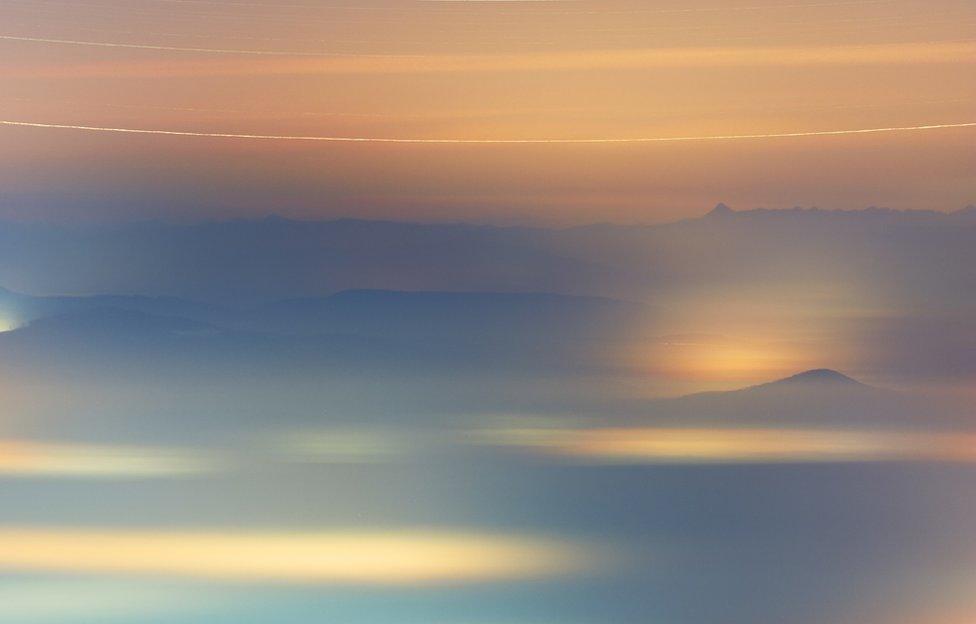
Runner-up: Chuanjin Su (China) with Eclipsed Moon Trail
This image shows a spectacular total lunar eclipse seen from Zhangjiakou, Hebei Province, China.
The photographer set his camera for a four-hour stack exposure, capturing an image that reflects the changes of the Moon's colour and brightness before, during and after the eclipse.
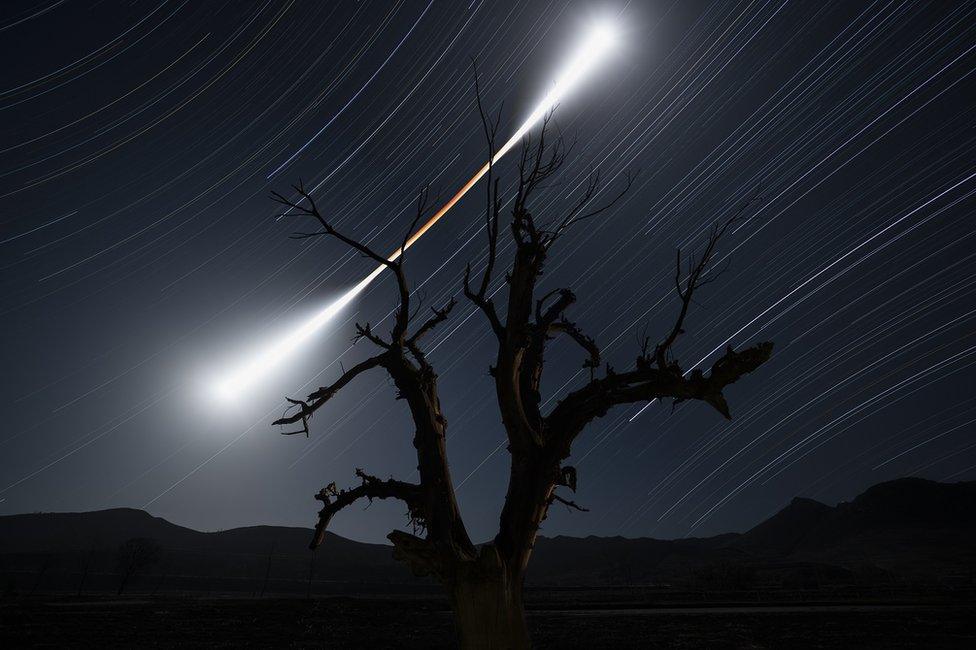

Stars and Nebulae
Winner: Mario Cogo (Italy) with Corona Australis Dust Complex
Under the dark Namibian sky, the photographer set his camera to a six-hour exposure in order to capture the CrA Molecular Complex, a large, dark and irregular area in the northern part of Corona Australis.
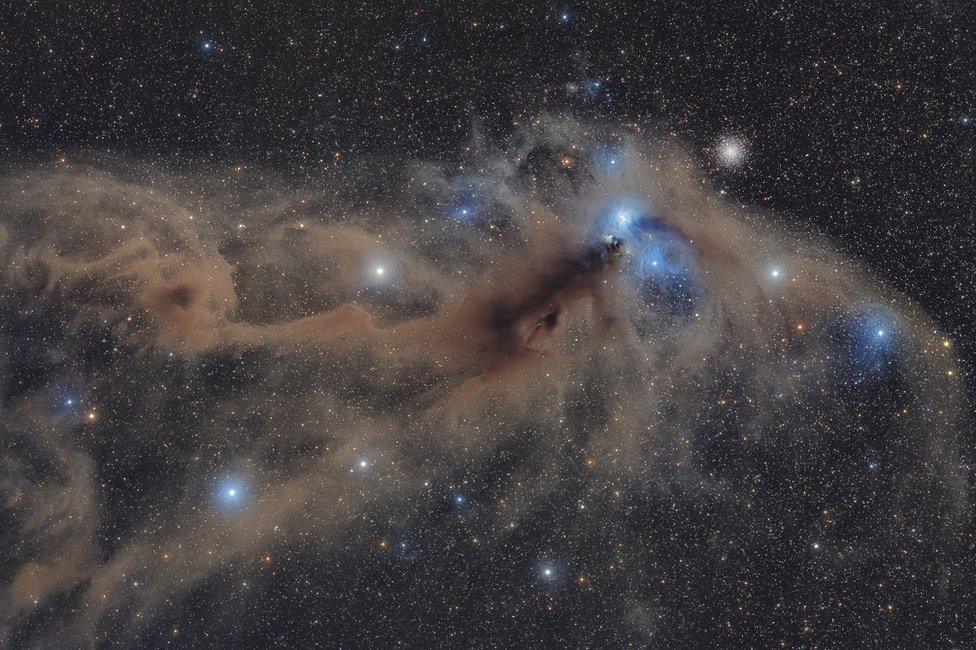
Runner-up: Mario Cogo (Italy) with Rigel and the Witch Head Nebula
The Witch Head Nebula is a very faint molecular gas cloud that is illuminated by supergiant star Rigel, the seventh brightest star of the sky and the brightest star in the constellation of Orion.
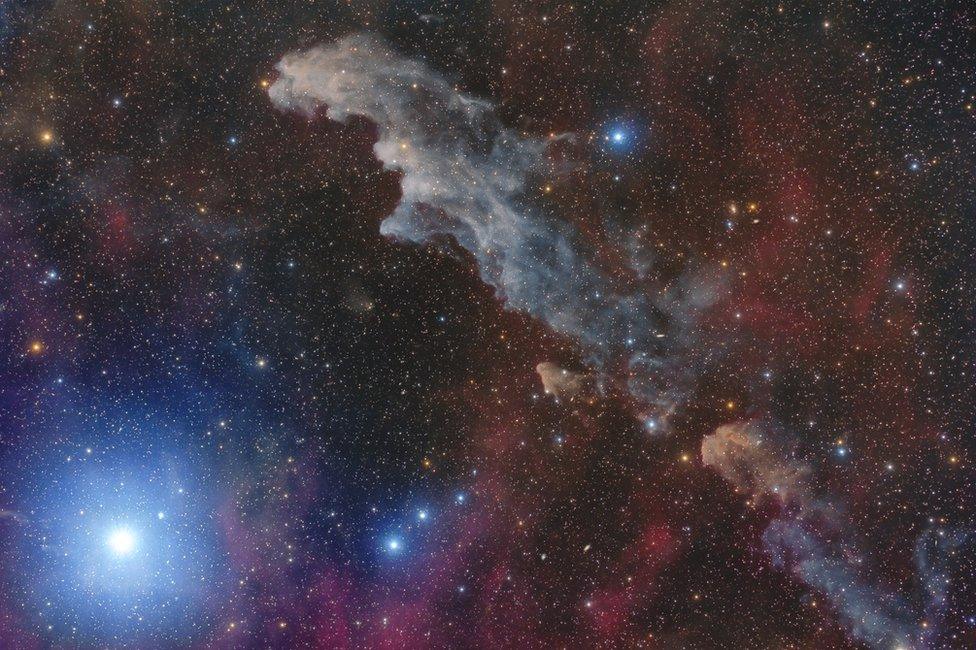

Young Astronomy Photographer of the Year
Winner: Fabian Dalpiaz (Italy, aged 15) with Great Autumn Morning
On an early Monday morning before taking an exam at school, the photographer decided to go out and take some images.
Shooting on a 50mm lens, Dalpiaz captured this incredible photograph of a meteor passing over the Dolomites in Italy.
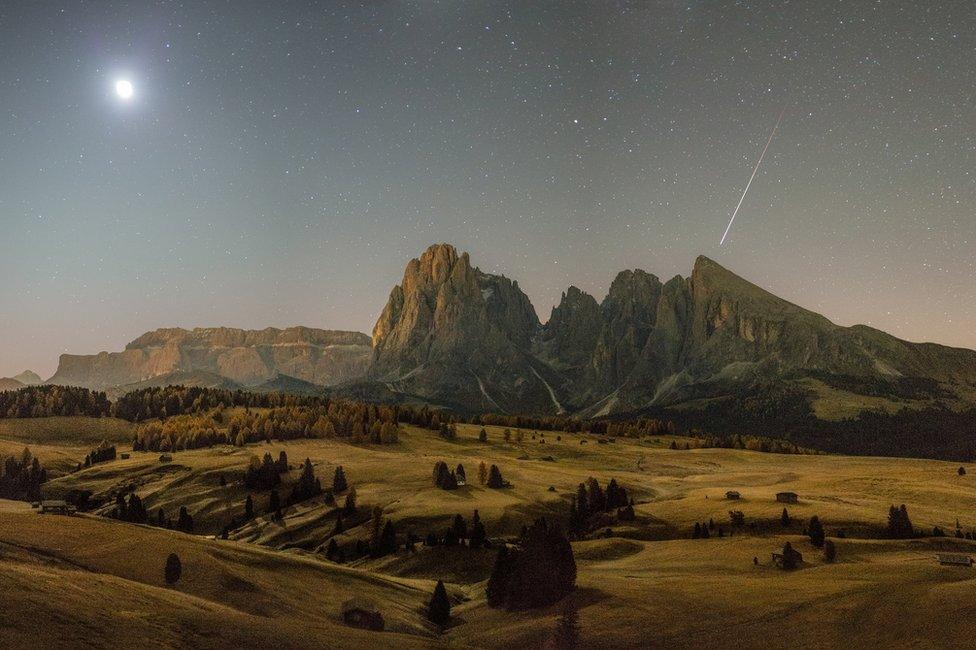
Runner-up: Logan Nicholson (Australia, aged 13) with The Eta Carinae Nebula
The Eta Carina Nebula, or NGC 3372, is the biggest and brightest nebula in the sky and is located in the constellation Carina.
To create this image, the photographer stacked and processed multiple shots.
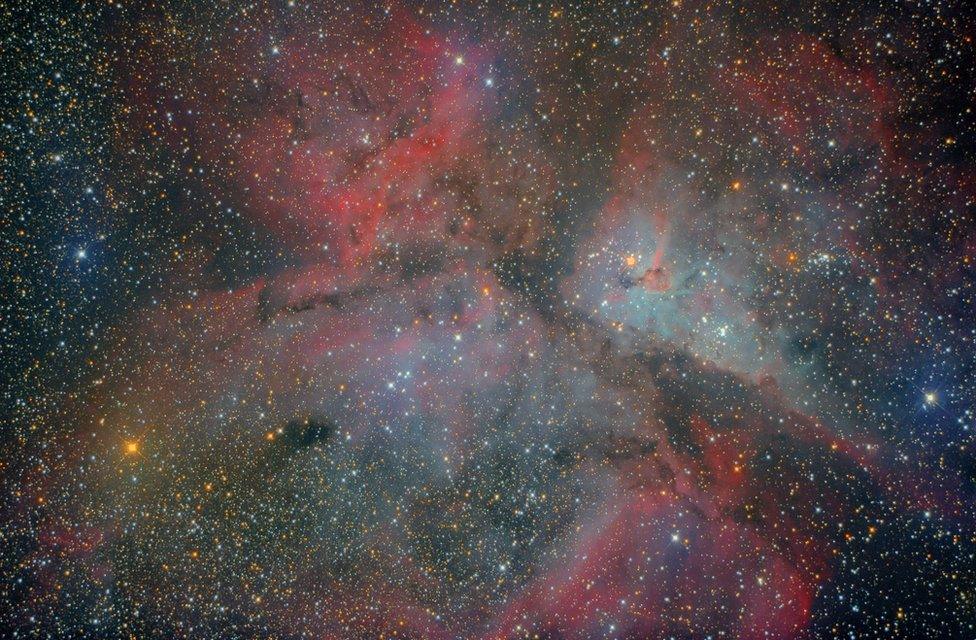

Special Prize: The Sir Patrick Moore prize for Best Newcomer
Winner: Tianhong Li (China) with Galaxy Curtain Call Performance
This was the last opportunity in 2017 to see the silver core of the Milky Way before it sunk below the horizon in Ming'antu, China.
The image is stitched together from a total of 20 pictures.


Special Prize: Robotic Scope
Winner: Damian Peach (UK) with Two Comets with the Pleiades
This image showcases a very rare conjunction of two bright comets passing the Pleiades star cluster; Comet C/2017 O1 (ASASSN) is on the far left while C2015 ER61 (PanSTARRS) is in the centre.
To capture this image, the photographer used a remote telescope located in Mayhill, New Mexico.
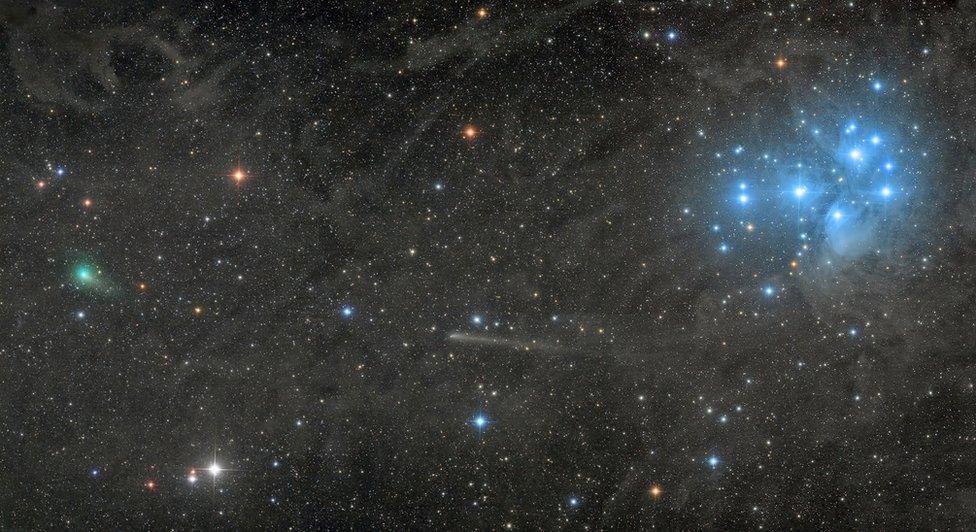
All photographs courtesy Insight Astronomy Photographer of the Year, Royal Observatory Greenwich.